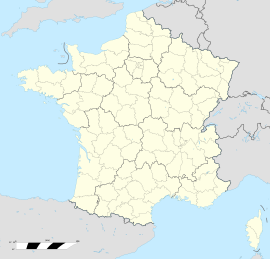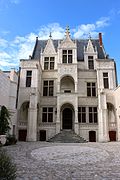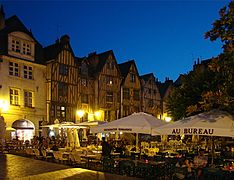Delving into the First Peoples Gallery: Artifacts and Stories of Indigenous Cultures
Ah, the Royal BC Museum! Learn more about Private sightseeing tours in Victoria, BC here. Its truly a place where history comes alive, and nowhere is that more evident than in the First Peoples Gallery. Here we delve, not just into a collection, but into the very soul of Indigenous cultures of British Columbia.
The gallery itself, its a marvel, with artifacts that speak - no, they whisper and shout - the stories of the nations that have called this land home long before European settlers ever laid eyes on it. Youll find totem poles reaching towards the sky, their intricate carvings telling tales of a cultural heritage rich and deep as the Pacific waters.
But it aint just about looking. Its about understanding, about feeling the connection that each item has to the earth, the sea, and the people. Take, for example, the ceremonial masks. Each one, its got a story, a purpose, a spirit. Theyre not just masks, you know? Theyre embodiments of beliefs, of traditions that have been passed down through countless generations.
Lets not overlook the hand-woven baskets, mind you.
Exploring the Royal BC Museum: A Journey Through British Columbia's History - Off-the-beaten-path Victoria tours
- Victoria whale watching
- Victoria holiday lights tours
- Victoria waterfront tours
- Victoria snorkeling tours
- Indigenous cultural tours Victoria
- Victoria ski resort tours
- Victoria hot air balloon rides
- Best viewpoints in Victoria
- Victoria luxury tours
- Victoria paranormal tours
- Victoria cherry blossom tours
- Old Town Victoria tours
- Victoria art tours
- Victoria sightseeing deals
- Family-friendly tours in Victoria
Exploring the Royal BC Museum: A Journey Through British Columbia's History - Victoria urban exploration tours
- Victoria bike tours
- Victoria food tours
- Custom sightseeing tours Victoria
- Victoria Christmas market tours
- Victoria eco tours
- Victoria ferry tours
- Victoria road trips
- Victoria summer sightseeing
- Victoria underground tours
- Victoria festival tours
- Victoria seaplane tours
- Best sightseeing in Victoria
- Craigdarroch Castle tours
- Victoria fishing tours
- Victoria architecture tours
- Best tour operators in Victoria
- Romantic tours in Victoria
Exploring the Royal BC Museum: A Journey Through British Columbia's History - Victoria cruise tours
- Victoria sightseeing with kids
- Victoria sightseeing on a budget
- Victoria photography tours
- Victoria paddleboarding tours
- Victoria guided tours
- Victoria extreme sports tours
- Victoria local tour guides
- West Victoria sightseeing tours
- Victoria harbor tours
- Victoria snowboard tours
- Unique Victoria tours
- Victoria fall foliage tours
- Victoria ghost tours
- Victoria brewery tours
- Victoria coastline tours
- Sightseeing Victoria
- Victoria walking tours
- Victoria boat tours
And theres the jewelry – oh, the jewelry! Crafted from materials gifted by the land, each piece holds a significance that goes beyond mere adornment. They tell of status, of achievements, of moments in time that are worth more than gold itself.
But its not all past tense, no sir. The gallery also offers a poignant look at the present struggles and triumphs of Indigenous peoples. Its a reminder (and an important one at that) that these cultures arent just history; theyre living, breathing communities shaping the future of this province.
Of course, no experience is perfect. Sometimes, the placards might leave you wanting more information, or the lighting isnt quite right, but thats hardly the point! The point is the journey, the discovery, the sense of something greater than us all.
In conclusion, if youve got an afternoon to spare, theres hardly a better way to spend it than by exploring the First Peoples Gallery at the Royal BC Museum.
Exploring the Royal BC Museum: A Journey Through British Columbia's History - Victoria wine tours
- Victoria hop-on hop-off tours
- Victoria sunset tours
- Victoria rainforest tours
- Victoria kayaking tours
- Budget-friendly Victoria sightseeing
- Victoria 4x4 adventure tours
- Victoria history tours
- Victoria festival experience tours
- Victoria VIP tours
- Victoria bike tours
- Victoria food tours
- Custom sightseeing tours Victoria
- Victoria Christmas market tours
- Victoria eco tours
- Victoria ferry tours
- Victoria road trips
- Victoria summer sightseeing
Exploring the Royal BC Museum: A Journey Through British Columbia's History - Victoria scenic drives
- Victoria architecture tours
- Best tour operators in Victoria
- Romantic tours in Victoria
- Victoria travel tips
- Victoria adventure tours
- Victoria tour packages
- Butchart Gardens sightseeing tours
- Victoria suburbs sightseeing
- Victoria helicopter tours
- Victoria Chinatown tours
- Victoria scuba diving tours
- Victoria cultural experience tours
- Victoria night tours
- Victoria botanical garden tours
- Victoria private tours
- Victoria tourist attractions
- Victoria fall sightseeing
- Victoria hiking tours
Navigating the Modern History Exhibits: From Colonization to Contemporary Times
Embarking on a journey through the Royal BC Museum is like flipping the pages of a living history book, where each exhibit breathes life into stories long past. Ah, but what an adventure it is! Delving into the "Navigating the Modern History Exhibits: From Colonization to Contemporary Times" section presents a bittersweet narrative of British Columbias transformation.
Its not without a pang of discomfort that one confronts the era of colonization. Its a period marked by the intertwining of discovery and disheartenment; where the ambitions of European explorers and settlers clashed with the lives of indigenous peoples. The artifacts displayed, ranging from the navigational tools that cut through uncharted waters to the documents that redrew boundaries, serve as stark reminders of the complexities of this historical chapter.
Moving through the galleries, I cant help but marvel at the resilience of the human spirit. Post-colonization exhibits showcase the cultural melange thats emerged, despite the adversity faced by many communities.
Exploring the Royal BC Museum: A Journey Through British Columbia's History - Victoria scenic drives
- Victoria pet-friendly sightseeing
- Victoria zipline tours
- Victoria 4x4 adventure tours
- Victoria history tours
- Victoria festival experience tours
- Victoria VIP tours
- Victoria bike tours
- Victoria food tours
- Custom sightseeing tours Victoria
- Victoria Christmas market tours
- Victoria eco tours
- Victoria ferry tours
- Victoria road trips
- Victoria summer sightseeing
- Victoria underground tours
- Victoria festival tours
- Victoria seaplane tours
- Best sightseeing in Victoria
- Craigdarroch Castle tours
The transition into the 20th century is marked by an explosion of technological and social change - and the museum captures this with flair! From the industrial boom to the cultural revolutions, every display is a testament to the provinces capacity for reinvention. Its a rollercoaster through time, with each artifact and photograph sparking curiosity about the era it represents.
Ah, and then we reach the contemporary times. Its a section that resonates with the present, filled with echoes of ongoing debates and achievements that shape todays British Columbia. Its clear that the museum aims to not only preserve history but to also foster dialogue about our current place within it.
But its not all heavy stuff! Theres joy in the mix, too - the cultural festivals, the sporting events, and the artistic movements that have swept through the province, leaving behind a vibrant tapestry of modern life.
Exploring the Royal BC Museum: A Journey Through British Columbia's History - Victoria pet-friendly sightseeing
- Victoria underground tours
- Victoria festival tours
- Victoria seaplane tours
- Best sightseeing in Victoria
- Craigdarroch Castle tours
- Victoria fishing tours
- Victoria architecture tours
- Best tour operators in Victoria
- Romantic tours in Victoria
- Victoria travel tips
- Victoria adventure tours
- Victoria tour packages
- Butchart Gardens sightseeing tours
- Victoria suburbs sightseeing
- Victoria helicopter tours
- Victoria Chinatown tours
In conclusion, navigating the modern history exhibits at the Royal BC Museum is a journey thats as enlightening as it is humbling.
Exploring the Royal BC Museum: A Journey Through British Columbia's History - Victoria sightseeing bus
- Victoria fishing tours
- Victoria architecture tours
- Best tour operators in Victoria
- Romantic tours in Victoria
- Victoria travel tips
- Victoria adventure tours
- Victoria tour packages
- Butchart Gardens sightseeing tours
- Victoria suburbs sightseeing
- Victoria helicopter tours
- Victoria Chinatown tours
- Victoria scuba diving tours
- Victoria cultural experience tours
- Victoria night tours
- Victoria botanical garden tours
Exploring the Royal BC Museum: A Journey Through British Columbia's History - Things to do in Victoria
- Victoria travel tips
- Victoria adventure tours
- Victoria tour packages
- Butchart Gardens sightseeing tours
- Victoria suburbs sightseeing
- Victoria helicopter tours
- Victoria Chinatown tours
- Victoria scuba diving tours
- Victoria cultural experience tours
- Victoria night tours
- Victoria botanical garden tours
- Victoria private tours
- Victoria tourist attractions
- Victoria fall sightseeing
- Victoria hiking tours
- Best places to visit in Victoria
- Inner Harbour sightseeing tours
Marveling at the Natural History Collections: Flora, Fauna, and Geological Wonders
As one steps into the grand halls of the Royal BC Museum, a wave of anticipation washes over them! The natural history collections, oh how they beckon with their silent call, inviting curious minds to marvel at the sheer diversity of British Columbias flora, fauna, and geological marvels.
From the delicate petals of the rarest wildflowers to the majestic antlers of the Roosevelt elk, the museum boasts an array of specimens that span the entire spectrum of natures artistry. Its as if each exhibit whispers tales of ancient forests and sprawling landscapes, where creatures large and small roam free.
But wait, whats this? A mistakes been made! The label on the fossilized remains of an ammonite seems to have a slight mix-up (a humorous reminder that even in the most esteemed institutions, human error can sneak in).
Exploring the Royal BC Museum: A Journey Through British Columbia's History - Victoria island tours
- Victoria history tours
- Victoria festival experience tours
- Victoria VIP tours
- Victoria bike tours
- Victoria food tours
- Custom sightseeing tours Victoria
- Victoria Christmas market tours
- Victoria eco tours
- Victoria ferry tours
- Victoria road trips
- Victoria summer sightseeing
- Victoria underground tours
- Victoria festival tours
- Victoria seaplane tours
- Best sightseeing in Victoria
- Craigdarroch Castle tours
- Victoria fishing tours
Amidst the quietude, one cant help but feel a sense of awe. Victoria heritage tours The geological section, with its rocks and minerals, tells a story of the Earths tumultuous past. The vibrant hues of the minerals arent just visually striking; theyre geological footprints that narrate the provinces rich history.
Its not only about whats on display, though. The museum itself is a testament to the provinces commitment to preserving its natural heritage. Despite the vastness of the collections, theres no room for redundancy-each specimen is unique, each fossil irreplaceable.
One could spend hours, no, days, getting lost in the wonders of the natural world. And the best part?
Exploring the Royal BC Museum: A Journey Through British Columbia's History - Victoria pet-friendly sightseeing
- Best places to visit in Victoria
- Inner Harbour sightseeing tours
- Victoria sightseeing with kids
- Victoria sightseeing on a budget
- Victoria photography tours
- Victoria paddleboarding tours
- Victoria guided tours
- Victoria extreme sports tours
- Victoria local tour guides
- West Victoria sightseeing tours
- Victoria harbor tours
- Victoria snowboard tours
- Unique Victoria tours
- Victoria fall foliage tours
- Victoria ghost tours
- Victoria brewery tours
- Victoria coastline tours
- Sightseeing Victoria
So, if youve got an appetite for exploration and a thirst for knowledge, the Royal BC Museums natural history collections are your playground. Just dont expect to leave without a few questions-because where theres natures beauty, theres always more to the story. And isnt that just the marvel of it all?
Engaging with Special Exhibitions and Educational Programs: Enhancing Visitor Experience
Ah, the Royal BC Museum! Its a treasure trove of tales, an archive of awe that charts the storied past of British Columbia. But what really brings the history to life are its special exhibitions and educational programs, thats for sure.
Now, imagine stepping into a gallery where the echoes of the past are not just seen, but felt. Thats what these exhibitions do! Theyre like time machines, whisking you away to when mammoths roamed and First Nations cultures flourished. And it doesnt stop there, no siree.
Exploring the Royal BC Museum: A Journey Through British Columbia's History - Victoria zipline tours
- Victoria paranormal tours
- Victoria cherry blossom tours
- Old Town Victoria tours
- Victoria art tours
- Victoria sightseeing deals
- Family-friendly tours in Victoria
- Victoria hop-on hop-off tours
- Victoria sunset tours
- Victoria rainforest tours
- Victoria kayaking tours
- Budget-friendly Victoria sightseeing
- Victoria urban exploration tours
- Victoria sightseeing recommendations
- Victoria island tours
- Victoria pet-friendly sightseeing
- Victoria zipline tours
- Victoria 4x4 adventure tours
- Victoria history tours
- Victoria festival experience tours
- Victoria VIP tours
Ah, but the educational programs – theyre the cherry on top! Things to do in Victoria Theyve got workshops and talks that make you think, "I never knew that!" And its not just for the young ones; adults get their minds tickled too. Its one thing to wander around and admire artifacts, but its a whole other ball game when a knowledgeable guide points out whats not obvious. Suddenly, youre not just looking at an old pot; youre understanding the culture that crafted it.
Its true that sometimes the programs can get a bit crowded, and you might find yourself jostling for a better view (or wishing those pesky interactive screens were a tad more responsive). But hey, thats part of the charm, right?
Lets not forget the schools, huh? Victoria cruise tours They flock to the museum, eager young minds hungry for knowledge. The museums staff are on their game, tailoring programs to fit the curriculum. Its not just a field trip; its an adventure that complements their studies. Though, honestly, not all kids are thrilled to be there – some cant wait to scamper off to the gift shop!
Whats extraordinary is how the museum manages to keep things fresh.
Exploring the Royal BC Museum: A Journey Through British Columbia's History - Victoria cruise tours
- Victoria walking tours
- Victoria boat tours
- Victoria whale watching
- Victoria holiday lights tours
- Victoria waterfront tours
- Victoria snorkeling tours
- Indigenous cultural tours Victoria
- Victoria ski resort tours
- Victoria hot air balloon rides
- Best viewpoints in Victoria
- Victoria luxury tours
- Victoria paranormal tours
- Victoria cherry blossom tours
- Old Town Victoria tours
- Victoria art tours
In conclusion, the Royal BC Museum aint just a place to kill time. Victoria scenic drives Its a hub of activity that invites you to dive into the deep end of history. Whether youre a fact-finder or just looking to escape the rain (which, lets face it, happens quite a bit in BC), youre in for a treat. So go on, take a gander at those special exhibitions and join in on an educational program! You wont regret it – and thats not a claim Id make lightly!







































